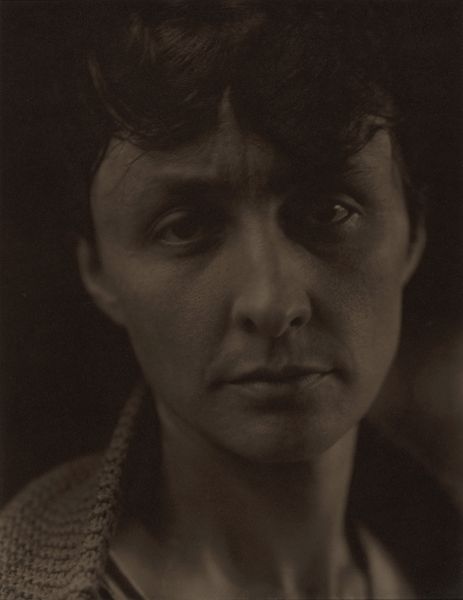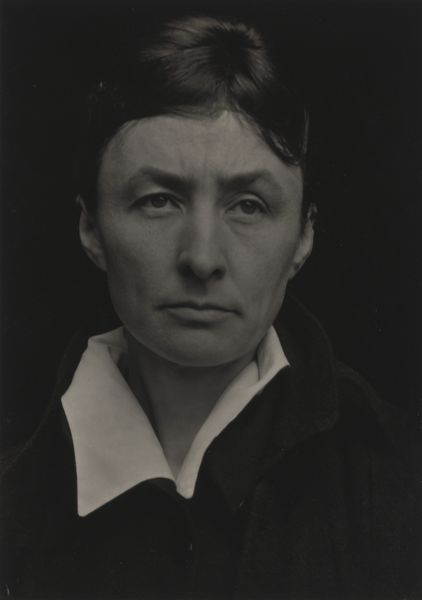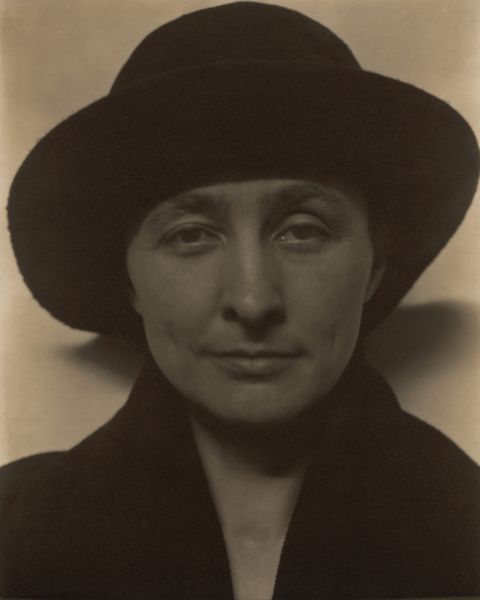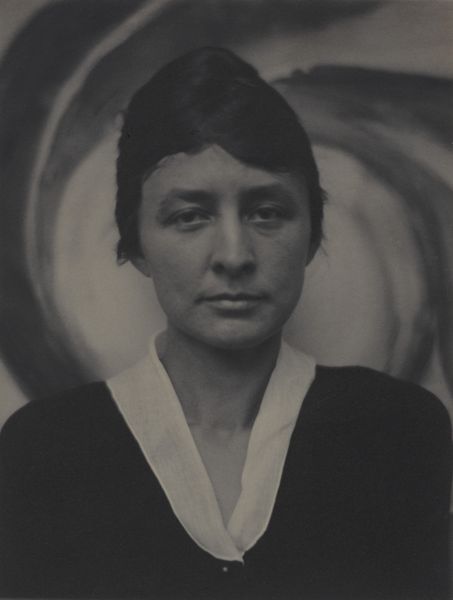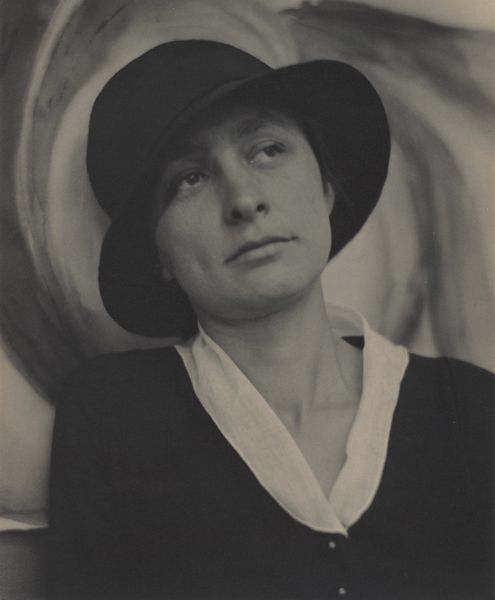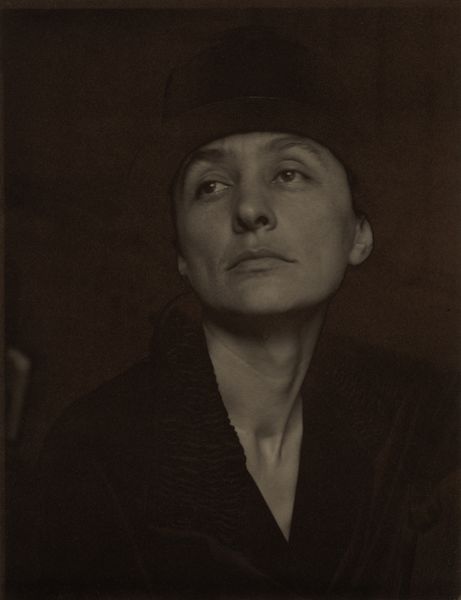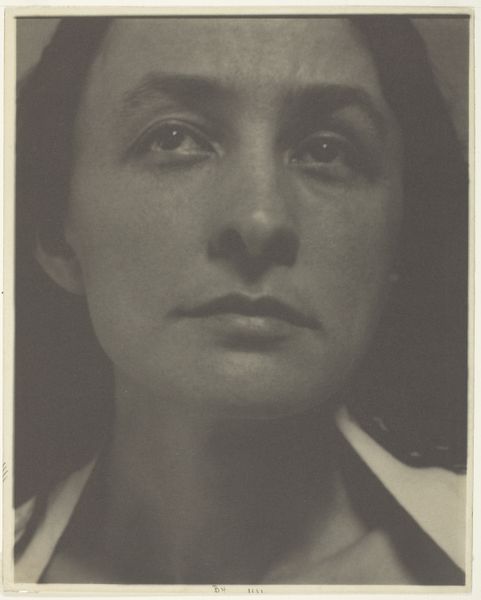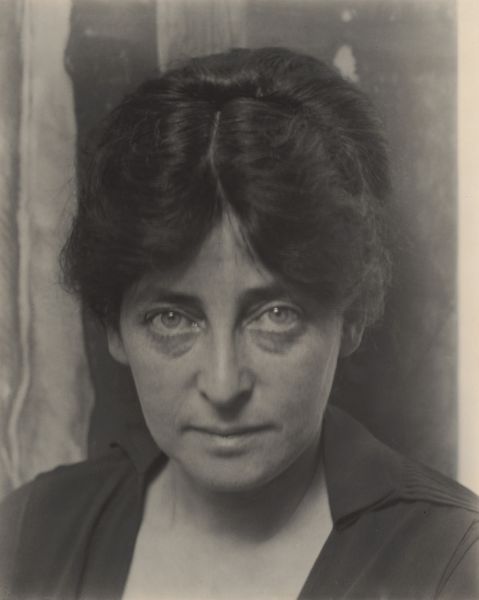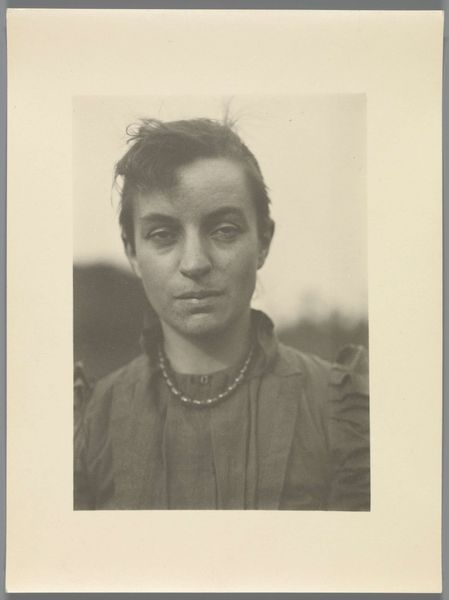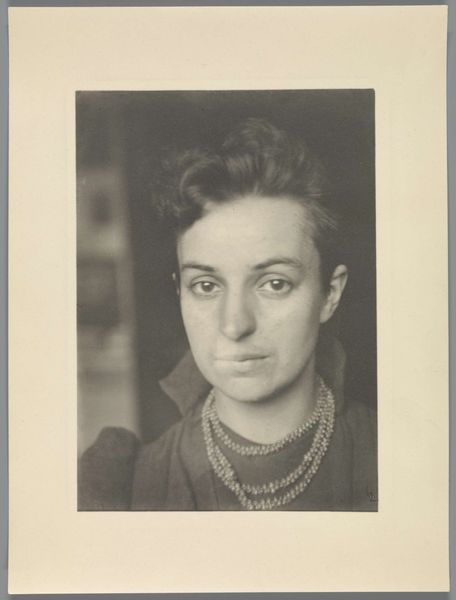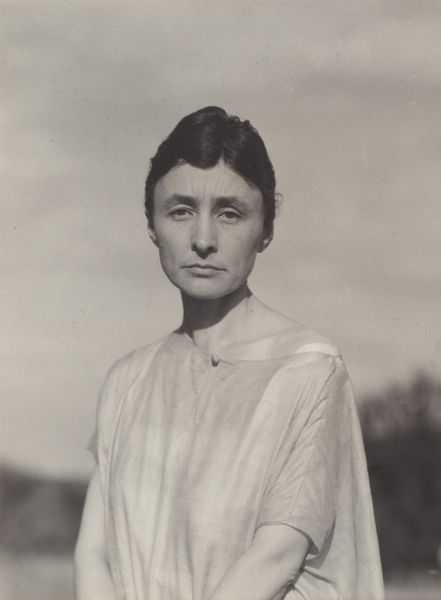
print, photography, gelatin-silver-print
#
portrait
#
self-portrait
#
pictorialism
# print
#
photography
#
gelatin-silver-print
#
modernism
Dimensions: 24.5 × 19.2 cm (image); 25 × 20.2 cm (paper); 56 × 45.6 cm (original mat)
Copyright: Public Domain
Editor: Here we have Alfred Stieglitz's photograph, "Georgia O'Keeffe," a gelatin silver print from 1918. It's a striking portrait, incredibly intimate. What really jumps out is the soft focus, it creates such a personal atmosphere. How do you interpret this work? Curator: It’s tempting to see this portrait purely through a romantic lens, given Stieglitz's relationship with O'Keeffe. But as an art historian, I find it equally compelling to consider its context within the development of photography as an accepted art form. Pictorialism, which this work exemplifies, aimed to elevate photography by emulating the effects of painting and etching, making it appear more artistic. Do you think it succeeds in doing this, blurring the lines of the acceptable way a picture or photograph should look like? Editor: Absolutely, the soft focus and tonal range give it a painterly quality. But knowing that it's Stieglitz photographing O'Keeffe, how does that influence its reception? Is it possible to separate their personal story from the image itself? Curator: That’s a crucial point. We cannot ignore the power dynamics inherent in their relationship and how that would affect O’Keefe’s portrayal by Stieglitz. Stieglitz, as a prominent figure in the art world, certainly played a significant role in shaping O'Keeffe's early public image, solidifying her position and their joint imagery within the artistic cannon. Was it to the advantage of both to cultivate the image? How was she being perceived during this era in American History? Editor: That's a perspective I hadn't fully considered – the politics of image-making, the art world as a driver for solidifying artists place within cultural memory and history, rather than merely the product of a personal connection. Curator: Precisely! Thinking about this artwork highlights the interwoven threads of personal narratives, artistic movements, and the societal forces that determine who and what gets remembered in art history. Editor: Thank you! That’s given me so much to think about – how public perception is crafted, and the active role institutions play.
Comments
No comments
Be the first to comment and join the conversation on the ultimate creative platform.
